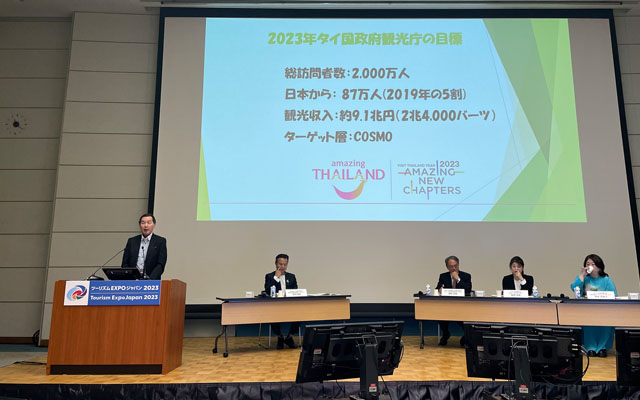Tourism stakeholders in Japan and overseas are accelerating efforts to encourage Japanese travellers to go abroad amid sluggish recovery of the country’s outbound market.
Just over one million Japanese travelled overseas in September, representing a 215 per cent increase year-on-year but only 58 per cent of the total recorded in September 2019. Most went to South Korea (250,102) and the US (173,117), followed by Taiwan (94,697), Thailand (80,010) and Spain (76,487), departing from Narita, Haneda and Kansai airports.

“We hope outbound travel will rebound to the 2019 level by early next year,” said Hiroyuki Takahashi, chairperson of the Japan Association of Travel Agents (JATA).
However, that may be optimistic according to a recent study of 3,000 people by Mitsubishi Research Institute, which shows Japanese consumers are being deterred from outbound travel by its increasing cost, exacerbated by the weak yen and stagnant domestic wages. Other barriers include lack of knowledge on planning a trip, the difficulty or cost of getting to an international airport, and concerns about the ability to communicate after arrival.
Respondents show less interest in travelling for sightseeing and shopping, and are more likely to go abroad for outdoor activities such as hiking. Among those travelling in 2023, most are men, aged 20 to 40, and travelling alone or in small groups. Longhaul destinations are showing the slowest rebound, according to Toshiya Miyazaki of Mitsubishi Research Institute Inc’s tourism policy team.
“Based on the survey, the potential market for outbound travel is 38 million (of a population of 125.7 million), of which 23 million could be travellers in the short-term, with five million open to travel immediately,” said Miyazaki.
Spain, Malaysia and Thailand are among the markets eager to attract these consumers due to the importance of the Japan market.
“The Japanese market is high-quality for Spain; they spend a lot, and outbound travel to Spain had been increasing pre-pandemic,” said Hiromi Kazama, promotion manager of the National Tourist Office of Spain. Her office is targeting people in their twenties for study, sports and business events.
Tourism Malaysia is working with Japan-based agents to attract 200,000 Japanese visitors by the end of 2023, well below the 424,694 Japanese visitors they welcomed in 2019. They are aiming for 50 to 70 per cent recovery of the market in 2024 and complete recovery in 2025.
“Our promotion keyword is diversity” because of the country’s multi-ethnicity, said the organisation’s marketing manager Kimiko Shimizu.
Thailand is unlikely to reach its target of 850,000 Japanese visitors in 2023, 50 per cent of pre-pandemic levels, according to Yoshiaki Fujimura, Tokyo office marketing manager for the Tourism Authority of Thailand.
Fujimura said growth plans include promoting parts of Thailand other than Bangkok to stimulate greater interest in the range of the country’s offerings.
Boosting the sluggish rebound is possible, opined Yoshinori Ochi, visiting professor at the department of international tourism management at Toyo University, pointing to the effectiveness of Japan’s recent domestic travel subsidy campaigns.
Ochi said local governments should support outbound tourism recovery by helping establish more charter and international flights, while promoting how and why Japanese consumers should organise a trip overseas.




















